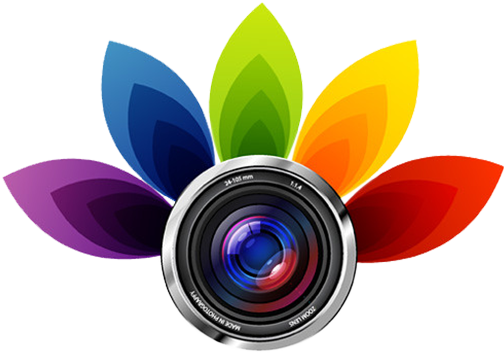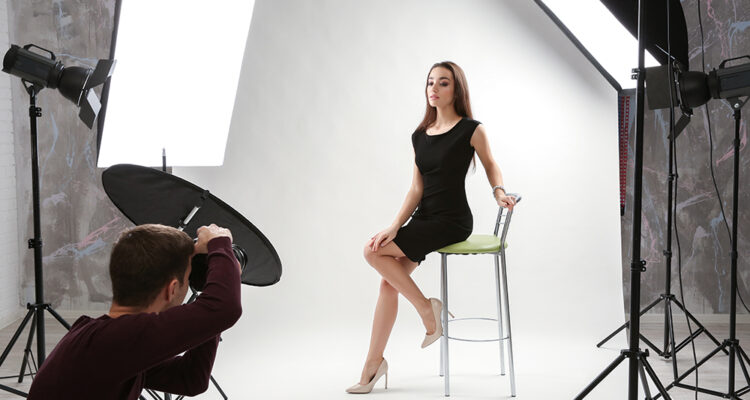Ideal Angles for Full Body Portraits In this article, we'll discuss some tips and ideas…
The Ultimate Guide to Model Photography
What is Model Photography?
Model photography is another branch of commercial photography covering shoots in, but not limited to, the fashion industry. It’s where a model poses for a photographer, whether it’s in a studio or specific location. Models can also use these photos for their portfolios.
What are the Best Practices and Techniques for Working with Models?
Before we get into the different poses your model can do to make your shot stunning, here are a few things to remember to have a more productive and stress-free shoot.
Remember that Your Model is a Person
This is something that we’d like to emphasize. Your model is a person, too; they have their own emotions, thoughts, interests, and anxieties. What we mean is you should always be considerate with your model. Make them feel that the shoot is a space where they can express themselves freely. Never force them to do something that’s against their will or belief.
Keep it Professional
Keep in mind that photography is a job, which means there’s a level of professionalism with shoots. That said, always ask for consent. Never touch the model or their clothing without asking for permission. As stated earlier, they are humans, which means any unnecessary touching might make them feel uncomfortable.
Always Compliment Your Model
Models take so much time to prepare for the shoot. They need to get their make-up done and pick the right outfit. So, it’s best to shout out, “You look fantastic!” every now and then. This can boost their confidence and help them relax more as the shoot goes on.
Establish Rapport
Always establish friendship when working with your models. It can help ease first-time jitters and make the model look comfortable when posing for the camera. On top of that, establishing a genuine connection with your model can create a more fun shooting environment.
Create Model Release Forms
Model release forms will protect you and the model from any legalities. Plus, they’re also a requirement for Time for Print or TFP shoots. It provides proof that you and the model did a shoot and ensures proper credits for the photographer. Make sure you include in the form the terms and conditions about the sharing and usage of photos.
Be Friendly to Your Model’s Companions
There might be instances that your model would bring a relative, friend, or partner during the shoot, which is perfectly okay. Don’t restrict your model. Beginners and even veterans would usually do this for support, promoting a better atmosphere for shoot day.
Don’t Sweat the Little Things
When you’re still a beginner in model photography, chances are you’ll be making a lot of mistakes along the way. However, don’t worry too much about them. This is your ticket to learning and improving your craft. So, if a shoot doesn’t go as planned, learn from it, and take the learning to your next shoot.
Model Photography Guide
You Will Need:
- A DSLR camera
- Extra batteries
- A basic zoom lens (18-55 mm)
- External flash
- Large white cards or sheets (about 3 ft x 4 ft) for light to bounce around your model if shooting in a controlled studio
- Tripod (when necessary)
Meet with the Model
Always meet with your model before the shoot day. Make sure to discuss what you want to achieve in the shoot and ask them if they’re okay with it. If not, allow them to express their concerns and boundaries. Most importantly, tackle the legalities of the model release form. This can protect your business in all aspects, even if the model is your close friend.
Be Punctual or Go to the Location Earlier
Whether it’s in a studio or specific location, you must arrive at the scheduled time or earlier. Respect your model’s time as much as you respect yours. Make sure that all your equipment and gears are complete when you go to the shoot. It would be a waste of time if you’ve arrived early but didn’t bring your DSLR with you.
Wardrobe Check
Most of the time, photographers and models agree on the specific clothing that the model will wear for the shoot. So, on the actual shooting day, check if the model is wearing the appropriate outfit. Typically, models bring more than one set of clothing. If you don’t find the first outfit suitable, kindly ask them to switch to other clothing.
Set Up Your Camera
It’s essential to check your camera settings, such as your shutter speed, aperture, ISO, and flash settings (when necessary) every time you do a shoot. Take a few snapshots of your model as test images to make sure you got the right settings. If you’re shooting in a studio where the lighting is controlled, stick to the normal settings and don’t change them.
However, if you’re shooting outdoors, you need to adjust the camera settings and take note of the lighting. See how it changes and affects your image. Doing so can help you decide where to position your model to get the best lighting. An external flash and tripod might also come in handy when the lighting conditions are not that great.
Direct When You Shoot
Now that you have everything dialed in, it’s time to start shooting. You may direct the model on how they should pose to achieve a better look. This is especially true if you’re trying to capture the beauty in their outfit or other accessories. You can also direct their facial expressions, and never forget to compliment them after a few shots.
Post-Production Methods
Check for Imperfections
No one is perfect, except when it comes to editing photos for the fashion industry. These imperfections include wrinkles, blemishes, yellow-ish teeth, and red-eyes (from flash). Get rid of all these imperfections through fancy editing software like Adobe Photoshop and Illustrator. You can also apply digital make-up since model photography focuses on the superficial meaning of beauty.
Color Correction
Color correction is a key process for post-production on any type of photography. Applying it can improve the quality of your image. You can make your subject brighter, more contrasty, vibrant, or even make them glow. To achieve a more realistic look, keep the colors as natural as possible.
Body Manipulation
Most fashion magazines would often require photographers to edit the body of the model. This can include improving body curves or making them bigger, smaller, or more contracted. Body manipulation exists to reach the beauty standards of most companies in the fashion industry.
Remove or Change the Background
Whether you’ve photographed in an outdoor or indoor location, backgrounds can be distracting and unappealing. Fortunately, advanced photo editing software can help you remove or change them. Most digital artists use a masking and clipping tool to edit the background. Just make sure that the new backdrop naturally blends with your subject to achieve paramount results.
Model photography is a fantastic way to create connections, especially if you plan to work for the fashion industry. However, always remember that your model is a person too. Be considerate with how they feel, and make sure that they’re comfortable during the shoot. Most importantly, don’t forget the equipment that you need to bring along and keep a professional attitude when walking into shoots.



This Post Has 0 Comments